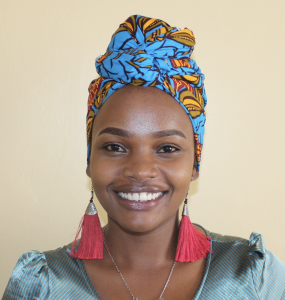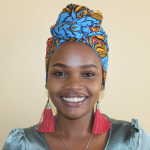It was a chilly morning when we first visited this dry, dusty community. There really isn't much human activity going on along the road, just a few local shops with a few groceries. Sango Market is right opposite Sango Primary School, creating a bit of chaos during peak hours.
Sango Primary School was established in 1968 with less than 50 pupils. Sango Primary is the mother of all the schools in this location since it was the first school to be established.
School starts at 7 in the morning. Pupils start trickling in one by one, some carrying water on their heads. They start by cleaning their classrooms with the little water they could carry from home. There are classes until lunch, when most students are dismissed to return home for a short time while the others remain for the school lunch program. At 2pm they resume for three more lessons and then break for extracurricular activities.
The school has grown rapidly, but the infrastructure has not kept up. There are 1,100 students attending Sango Primary School who do not have a reliable source of clean water. For the first couple of years the school didn't have any water at all. Parents realized how much their children were suffering at school and hired someone to dig a well. This well is just a hole in the ground conveniently located next to the school kitchen.
Whoever they hired quit digging as soon as they hit water. Unfortunately, that means the well dries up when it doesn't rain for several days. The shallow water is very dirty and smelly, anyways. The hatch covering the hole doesn't do much at all to protect the water inside.
To supplement water from the well, students are required to bring more water from home in the mornings and when they return from lunch break.
"The school is in deep need of safe water for sanitation in order to keep the school running. The lunch program needs clean water for cooking and cleaning utensils. We tend to borrow [water] from our neighbors," said Mr. Hezron Gweyaya.
Students are thirsty for clean drinking water. Since students often have to resort to dirty water, they miss a lot of class due to waterborne illnesses like typhoid.
What we can do:
Training
Training on good hygiene habits will be held for two days. The facilitator will use PHAST (participatory hygiene and sanitation transformation), ABCD (asset-based community development), CTC (child to child), lectures, group discussions, and handouts to teach health topics and ways to promote good practices within the school. The CTC method will prepare students to lead other students into healthy habits, as well as kickstart a CTC club for the school.
Handwashing Stations
This CTC club will oversee the new facilities, such as handwashing stations, and make sure they are kept clean and in working condition. The two handwashing stations will be delivered to the school, and the club will fill them with water on a daily basis and make sure there is always a cleaning agent such as soap or ash.
VIP Latrines
The only two available latrines in the school are very dirty and smelly. They are washed once a week on Monday, which isn't nearly enough to keep up with the 550 students per latrine.
Two triple-door latrines will be constructed with local materials that the school will help gather. Three doors will serve the girls while the other three serve the boys. And with a new source of water on school grounds, students and staff should have enough to keep these new latrines clean.
Rainwater Catchment Tank
A 50,000-liter rainwater catchment tank will help alleviate the water crisis at this school. The school will also help gather the needed materials such as sand, rocks, and water for mixing cement. Once finished, this tank can begin catching rainfall that will be used by the school’s students and staff.
We and the school strongly believe that with this assistance, standards will significantly improve. These higher standards will translate to better academic performance!

 Rainwater Catchment
Rainwater Catchment
 Rehabilitation Project
Rehabilitation Project



































